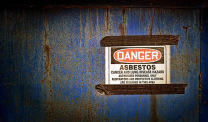Global Mesothelioma Incidence Report Assesses Risk Factors
Asbestos Exposure & BansWritten by Sean Marchese, MS, RN | Edited By Walter Pacheco

A new study published in the Journal of Thoracic Oncology has evaluated the global burden of mesothelioma. The report analyzes trends by age, sex and geographic location to assess risk factors on a population level.
Northern Europe, Australia and New Zealand reported the highest incidence rates, according to the study. The age-standardized rate of mesothelioma was 0.30 per 100,000 persons, with the incidence rate much higher in males than in females.
Asbestos exposure is the primary cause of mesothelioma and is historically linked to several occupational environments. This rare type of cancer is highly lethal and can significantly impact a patient’s quality of life.
Recently, many developed countries have restricted or banned the use of asbestos due to its carcinogenic properties. Nevertheless, there are still a significant number of people exposed to asbestos in developing countries. In these areas, the use of asbestos is still widespread.
Asbestos Risk Around the World
The study analyzed data from the Global Cancer Observatory, Cancer Incidence in Five Continents Plus and Global Burden of Disease. The researchers used this data to determine the global incidence of mesothelioma and its risk factors.
They conducted a multivariable analysis for each country by sex and age. This allowed them to evaluate the associations between mesothelioma incidence and asbestos. They also calculated the average annual percentage change, or AAPC, to evaluate epidemiological trends.
Countries with higher human development index, gross domestic product per capita and asbestos exposure had higher mesothelioma rates. The study authors attributed these differences to the historical asbestos use during industrialization in these regions.
Differences may also indicate inequality in access to health care resources. Inaccessible or poor-quality health care creates a substantial disparity in the accuracy of diagnosis.
The report notes that the overall trend of mesothelioma incidence is decreasing. Among ages 50 to 74, five countries with higher gross domestic products reported decreasing trends. Germany had the most significant decrease, followed by the United States and Australia. In contrast, Iceland reported a considerable increase.
Brazil had the most substantial decrease in mesothelioma incidence in less-developed countries, and Bulgaria had the highest. While the incidence rate in males was higher overall, mesothelioma incidence in females is trending upward. This increasing trend may indicate increased environmental exposure to asbestos fibers.
Data Sources Complicate Findings
The study’s findings provide valuable insights into the epidemiology of mesothelioma. However, the researchers caution against multiple limitations of the study. They note that the estimated global mesothelioma cases might need to be revised. In lower-income countries, there is a potential under-reporting and misclassification of cancer cases.
These countries are more likely to have a substandard quality of cancer data, registry and analytical capacity. Another limitation is mesothelioma’s long latency period of 20 to 60 years. This window from exposure to diagnosis diminishes the accuracy of a mesothelioma diagnosis.
Study authors also noted that overestimation or underestimation of associations might be possible due to the type of analysis. There may also be changes in cancer registries for some countries, and direct comparison over time might not be appropriate.
Results from this report regarding disease burden, risk factors and mesothelioma trends from nearly 186 countries should not be overlooked. They highlight the need to continue reducing exposure to asbestos. The study’s authors suggest that implementing safety guidelines and protective equipment to protect workers from asbestos exposure is crucial.
These results also emphasize the importance of identifying and addressing potential risk factors for mesothelioma. The study’s findings suggest that further research is needed to explore the potential role of germline mutations and other environmental risk factors.






